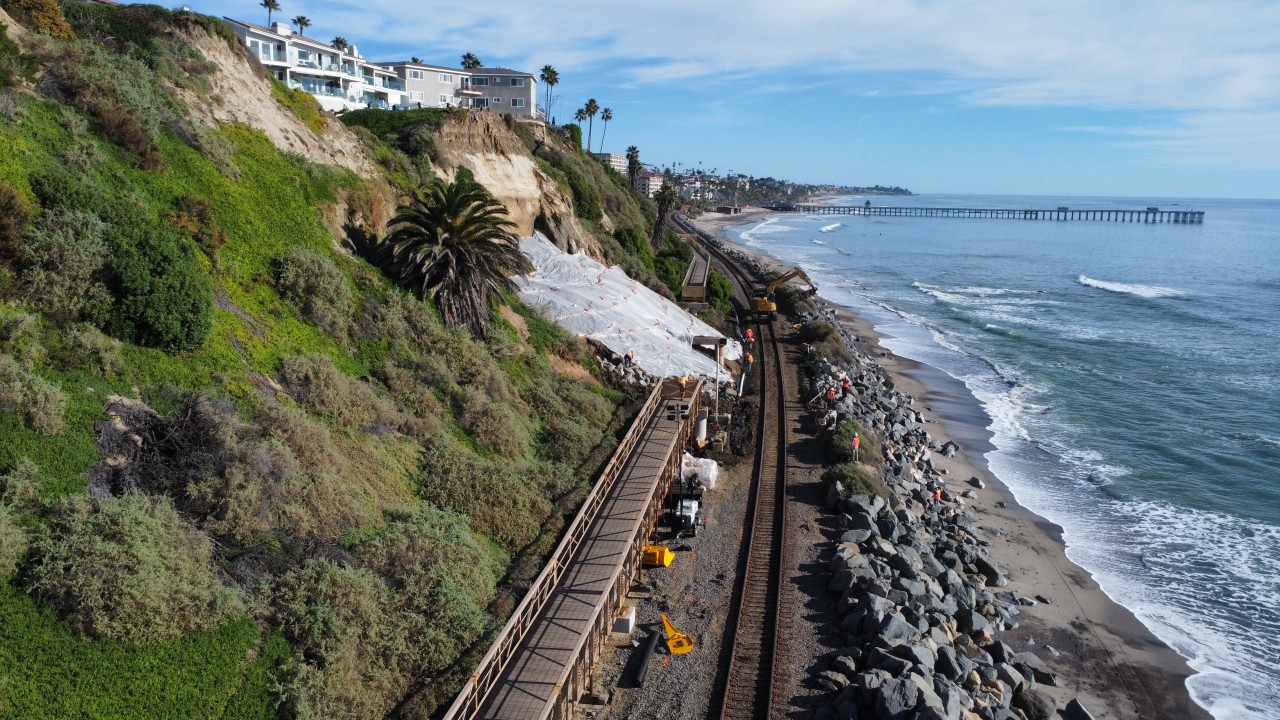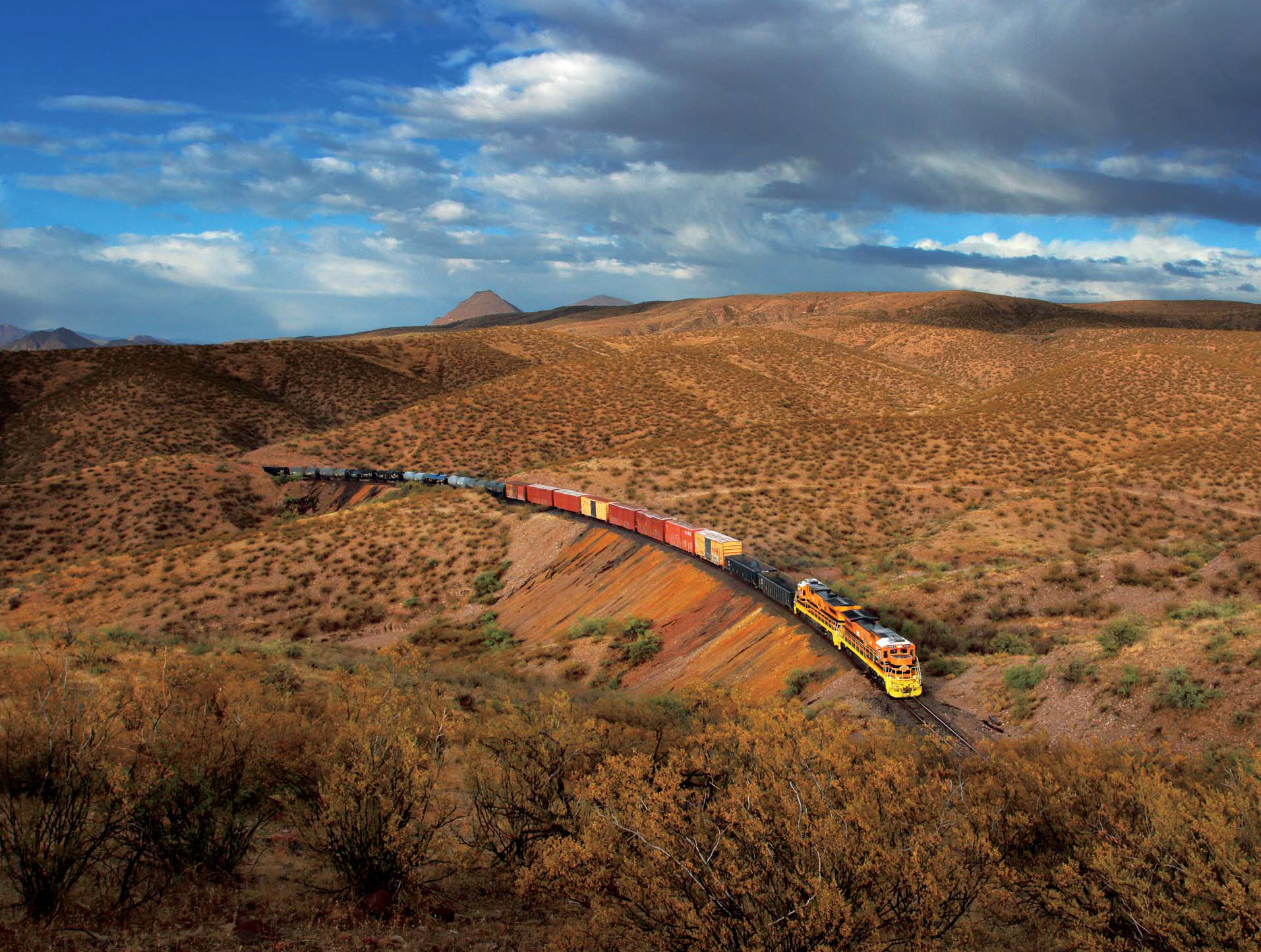
The Bipartisan Infrastructure Law is delivering USD 2.4 billion investment for 122 rail improvement projects in 41 states and Washington, D.C. that will make railways more resilient, reliable, while providing better freight and passenger services.
Administered through Federal Railroad Administration’s Consolidated Rail Infrastructure and Safety Improvements (CRISI) programme, grants being announced will benefit every region of the country, especially rural communities. Projects in this round of selections reflect the broad array of rail safety and service improvements eligible under this programme, such as upgrading track, replacing or rehabilitating aging bridges, expanding rail connections at ports, adding modern locomotives to fleets and more. The CRISI programme is also the only federal grant programme prioritising smaller, short line railways vital to the American economy and regional supply chains.
The selected rail improvement projects will benefit from USD 1.1 billion grant that will be provided for projects which will also support services and activities in rural areas. USD 218.6 million will be provided for new intercity services and USD 53.6 million will be provided for workforce development, among others.
Some selected CRISI projects to be financed under this grant are:
USD 157.1 million will be delivered in Illinois for Springfield Rail Improvements project phase IV – North Grand Ave. and III, for the Multimodal Transport Centre project. This will consolidate Union Pacific and Norfolk Southern corridors into one multitrack corridor through the city and advance the efforts to provide a higher speed intercity passenger rail connection between St. Louis and Chicago.
In addition to track improvements and new grade crossing separations, the project will also construct a Multimodal Transport Centre to better connect public transport options such as passenger rail, local bus service, and intercity bus service. Massachusetts Department of Transportation will use USD 36.8 million for Springfield track design and reconfiguration, including siganlling and other rail infrastructure improvements along CSX, Amtrak, and MassDOT track.
North Carolina Railroad (NCRR) secured more than USD 105.5 million for the Carolinian and Piedmont Passenger and Freight Improvements project which will improve the capacity of its NC-Line to meet the growing demands of both freight and passenger rail traffic. Upgrades would add over 8 km of sidings, reconstruct up to 111 km of track, one grade crossing removal, and improve track geometry. The project will increase on-time performance for existing Amtrak routes, allow for additional passenger trains along the growing corridor, and meet the needs of a growing manufacturing sector.
Coastal Rail Infrastructure Resiliency project implemented by Orange County Transportation Authority (OCTA) obtained USD 100 million for construction and track improvement along Amtrak’s Pacific Surfliner corridor on infrastructure owned by OCTA, which will contribute the 68.25% non-federal match.
A USD 67 million grant – ranked the third – will be invested for Detroit Recharged – realising environmental changes happening around railways generating equitable development, which will improve and expand the Livernois Intermodal Facility. This project consists of installing 5.2 km of new track and upgrading paving as well replacing diesel gantry cranes with new hybrid and fully electric gantry cranes in Detroit and Wayne County.
Colorado Department of Transportation (CDOT) will use USD 66.4 million to plan, design and build track installation and to deploy PRT signalling system which will be tested on a section of the Front Range Subdivision, including the construction of a new siding.
Kiamichi Railroad Company secured a financing of USD 56.6 million for track upgrade on the network of the Ashdown, Hope, and Paris subdivisions in Oklahoma, as well as Arkansas and Texas. The project will replace approximately 122.3 km of jointed rail with continuous welded rail and resurface and install ballast on these sections.
More than USD 43 million grant will be used by Alaska Railroad Corporation (ARRC) to rehabilitate the existing bridge over Tanana River in Nenana to extend bridge’s useful life to carry mainline freight and passenger rail traffic between Fairbanks and Anchorage, Alaska’s two largest cities.
Georgia will receive USD 26.5 million for Colonel’s Island rail improvement project implemented in partnership with the Georgia Ports Authority. The project will improve the Myd Harris Yard and construct a new South Side Rail Yard at the Colonel’s Island Terminal in Brunswick, creating new opportunities to move automotive shipments by rail instead of truck. Specifically, for the South Side Rail Yard, the project will construct four new yard tracks, estimated at 7.2 km of track, and construct south side auto storage area and a perimeter road, as well as grade separate an existing crossing. Additionally, the project will lengthen and reconfigure tracks at the existing Myd Harris Yard to improve operational efficiency and bring rail switching activities inside the terminal and away from the adjacent neighborhood.
USD 21.6 million will go in Arizona for the Eastern Arizona rail safety, efficiency, and resiliency project, which rehabilitates approximately 54.7 km of track, replaces three aging timber bridges, installs two emergency crossings, cuts brush within rights-of-way, and retrofits two tank cars for firefighting. The project will address infrastructure vulnerabilities in a location with a history of wildfires.
USD 14 million funding is provided for Mechanical Craft Workforce Development Apprenticeship Training programme, a 36-month implementation project implemented in partnership with Amtrak. This project will build a skilled mechanical craft workforce for Amtrak to maintain its fleet of equipment. The project will improve safety and service performance by providing Amtrak job opportunities and career paths in various mechanical crafts that are essential to maintaining service and improving efficiency. The apprenticeship programme is a collaboration between Amtrak and several labor unions, with programnes being offered in Beech Grove, Indiana; Wilmington, Delaware; Washington, DC; New York, New York; Chicago, Illinois; and Los Angeles, California.
Rolling stock:

Also in Arizona, USD 3.38 million will support diesel locomotive conversion to battery-electric locomotive implemented by GCR Acquisitions LLC to operate on the Class III Grand Canyon Railway’s (GCR) tourist operation between Williams, AZ, and the South Rim of the Grand Canyon National Park. This locomotive upgrade would allow GCR to transport tourists to the park and back on the same battery charge, reducing emissions and noise impacts in this rural and environmentally sensitive area. Xanterra, Grand Canyon Railway’s parent company, will contribute the 20% non-Federal match.
In California five locomotive projects secured USD 106.6 million, which will support the acquisition of zero-emission locomotives and locomotives conversion activities.
California Air Resources Board obtained USD 36.5 million that will support the acquisition of battery-electric and hydrogen locomotives as well as the installation of four ZE battery chargers throughout California. The proposed project was selected for final design and construction and includes replacement of 10 diesel locomotives with 9 zero-emission battery-electric locomotives and one hydrogen fuel cell locomotive and installation. Pacific Harbor Line will acquire 5 battery-electric locomotives and 2 battery chargers. Watco will acquire 4 battery-electric locomotives and 2 battery chargers. Sacramento Valley Railroad will acquire one hydrogen fuel cell locomotive. The California Air Resources Board and Pacific Harbor Line will contribute 28% non-Federal match.
Mendocino Railway (MR) secured USD 11.4 million for final design and construction to acquire and repower three Tier 0 diesel-electric switcher locomotives with three Tier 4 diesel-electric switcher locomotives to be put into service along the Mendocino Railway rail line, running from Fort Bragg to Willits. This project also involves cleaner technology and locomotive conversion that will result in the reduction of criteria pollutants and greenhouse gases. Mendocino Railway will contribute the 23% non-Federal match.
USD 20.45 million was secured by Modesto and Empire Traction Company for final design and construction activities to repower 9 existing locomotives which are currently powered by three internal engines. The project would replace these locomotives with a single engine in each locomotive to meet Tier 4 emissions standards. The company will contribute 20% of non-Federal match.
Trona Railway Company will benefit from USD 13.1 million grant to replace 6 uncontrolled locomotives with three Tier 4 locomotives. Trona Railway Company and the California Air Resources Board will contribute the 25% non-Federal match.
Watco Companies secured USD 19.84 million grant for design, development and construction and acquisition and repower 8 diesel locomotives non-tiered and Tier 0 with 8 battery-electric, zero emission locomotives to be put into service on Watco-operated rail lines. The locomotives will be used at five Watco facilities. Watco will contribute 20% non-Federal match.
USD 15.86 million will go to Minnesota Commercial Railway to replace 9 uncontrolled locomotives with 6 locomotives to meet Tier 4 emissions standards. The company will contribute 20% non-Federal match.
Almost USD 16 million will be used by Steuben County Industrial Development Agency to acquire and repower 2 existing Tier 0 locomotives to be replaced by two Tier 4 locomotives to operate at Alstom’s Kanona facility in Bath, New York. The project will explore the feasibility and commercial viability of a locomotive that demonstrates the efficiency and reliability of battery technology while using a Tier 4 diesel engine along with regenerative braking to charge the batteries. Norfolk Southern Railway will contribute the 25% non-Federal match.
Tacoma Rail benefits a USD 8.3 million grant to replace 4 Tier 0 diesel-electric switcher locomotives with 4 Tier 4 diesel-electric switcher locomotives of comparable horsepower at Tacoma Rail’s rail yard located at Tacoma, Washington. Tacoma Rail will contribute 23% non-Federal match.
USD 3.4 million will be used by Bighorn Divide & Wyoming Railroad Inc. to replace a Pre-Tier 0 locomotive with a locomotive that meets Tier 4 locomotive emissions standards which will help reducing fuel consumption, greenhouse gas emissions, and air pollutants around the Casper rail yard. The Bighorn Divide & Wyoming Railroad will contribute 20% non-Federal match.
Colorado State University, Pueblo, will benefit a USD 11.7 million financing for a research and development project studying green hydrogen and renewable natural gas-powered rail vehicles. The project aims to conduct safety experiments on the use of compressed hydrogen and compressed natural gas-powered rail cars at the Transportation Technology Centre facility in Pueblo. Project partners the University of Hawaii and OptiFuel will contribute the 36% non-Federal match.
Central Railroad Company of Indianapolis d.b.a. CFE will USD a 21.48 million grant for the procurement of a 26-car continuous welded rail train and 75 ballast cars to support the Chicago, Ft. Wayne & Eastern Railroad. The rolling stock will used as the primary equipment required to safely and efficiently deliver essential materials to track-rehabilitation and -upgrade projects. The Chicago, Ft. Wayne & Eastern Railroad and Indiana DOT will contribute the 35% non-Federal match.
R.J. Corman Railroad Group secured USD 32.18 million that will support track rehabilitation and track expansion, as well as the replacement of 75 specialty railcars with flatcars.
The announcement of the CRISI grant is part of a series of investments the Biden-Harris Administration has made in nearly 300 rail improvement projects and dozens of emerging passenger rail corridors across the country through Bipartisan Infrastructure Law-funded FRA grant programmes.
Share on:



